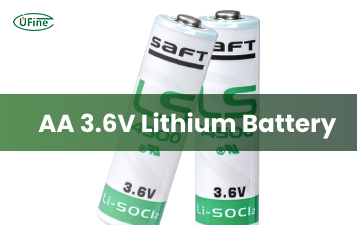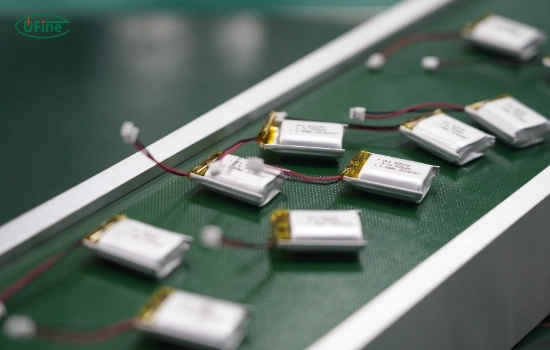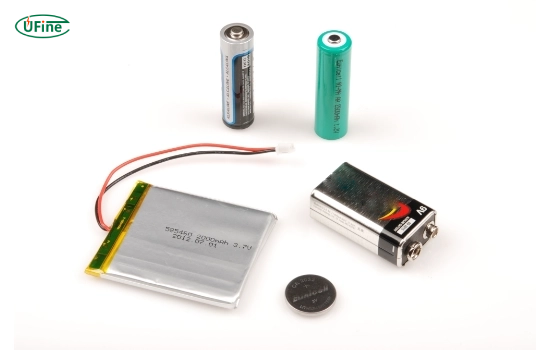As technology advances, the demand for compact power solutions continues to grow. Small size batteries are essential components in various devices, enabling portability and efficiency without sacrificing performance. This guide will delve into the specifics of small size batteries, including their dimensions, applications, and advantages. It will provide you with a comprehensive understanding of this vital technology.
Part 1. What is a small size battery?
A small size battery is a compact energy storage device designed to fit into devices where space is limited. Manufacturers typically define these batteries by their small dimensions, ranging from a few millimeters to a few centimeters. They are crucial for powering a wide array of electronic devices, from smartphones to medical equipment, where larger batteries would be impractical.
Part 2. Types of small size batteries
There are several types of small size batteries, each with its own unique characteristics, advantages, and disadvantages. Here’s a closer look at some of the most common types:
1. Lithium-ion (Li-ion) Batteries
Advantages:
- High Energy Density: Li-ion batteries provide a large amount of energy relative to their size, making them ideal for portable devices.
- Rechargeable: You can recharge them hundreds of times, offering long-term cost savings and convenience.
- Low Self-Discharge Rate: They retain their charge well when not in use.
Disadvantages:
- Cost: Li-ion batteries are generally more expensive than other types.
- Safety Concerns: They can overheat or even catch fire if damaged or improperly handled.
2. Nickel-Metal Hydride (NiMH) Batteries
Advantages:
- Environmentally Friendly: NiMH batteries are less toxic than other rechargeable options.
- Sound Performance: They perform well in high-drain applications and have a decent lifespan.
Disadvantages:
- Self-Discharge: NiMH batteries can lose their charge faster than Li-ion batteries when not in use.
- Lower Energy Density: They generally provide less energy than Li-ion batteries of the same size.
3. Alkaline Batteries
Advantages:
- Widely Available: Alkaline batteries are easy to find and inexpensive.
- Suitable for Low-Drain Devices: They perform well in devices that do not require a lot of power.
Disadvantages:
- Single-Use: Most alkaline batteries are not rechargeable, leading to more waste.
- Lower Energy Density: They provide less energy than rechargeable options.
4. Coin Cell Batteries
Advantages:
- Compact Size: Coin cells are tiny and can fit into tight spaces.
- Long Shelf Life: They can last several years when stored properly.
Disadvantages:
- Limited Capacity: Coin cells generally provide less power than larger batteries.
- Non-rechargeable: Most coin cells are designed for single use.
5. Zinc-Carbon Batteries
Advantages:
- Cost-Effective: These batteries are inexpensive and widely available.
- Suitable for Low-Drain Applications: They work well in devices that require minimal power.
Disadvantages:
- Shorter Lifespan: Zinc-carbon batteries have a shorter lifespan than alkaline and rechargeable batteries.
- Lower Energy Density: They offer less energy than other battery types.
Part 3. Small size batteries chart
Small size batteries come in various shapes and sizes, catering to different device requirements. Here’s a general size chart for common small size batteries:
|
Battery Type |
Dimensions (mm) |
Weight (g) |
Common Applications |
|
CR2032 (Coin Cell) |
20 x 3.2 |
3 |
Watches, remote controls, medical devices |
|
18650 (Li-ion) |
18 x 65 |
45 |
Laptops, electric vehicles, power tools |
|
AA (Alkaline) |
14.5 x 50.5 |
23 |
Toys, flashlights, portable radios |
|
AAA (Alkaline) |
10.5 x 44.5 |
11.5 |
Remote controls, cameras, small devices |
|
10440 (Li-ion) |
10 x 44 |
12 |
Flashlights, small electronic devices |
|
A23 (Alkaline) |
10.3 x 28.5 |
8 |
Key fobs, smoke detectors |
|
CR123A (Li-ion) |
17 x 34.5 |
16 |
Cameras, security systems, flashlights |
These dimensions highlight the compact nature of small size batteries, making them suitable for various applications.
Part 4. Applications of small size batteries
People use small batteries in a wide range of applications, especially in devices where space is at a premium. Here are some specific applications where small size lithium batteries excel:
- Wearable Technology: Small size lithium batteries are integral to smartwatches, fitness trackers, and health monitors. Their compact size ensures that these devices remain lightweight and comfortable for users.
- Medical Devices: In the medical field, small batteries power devices such as hearing aids, insulin pumps, and portable diagnostic tools. Reliability and longevity are crucial in these applications, making lithium batteries popular.
- Consumer Electronics: Devices like remote controls, digital cameras, and portable gaming consoles often rely on small size batteries. Their ability to deliver high energy density compactly is essential for maintaining device performance.
- Internet of Things (IoT): Small-size lithium batteries are vital for IoT devices, which often require long-lasting power in a small package. Sensors, smart home devices, and wearables benefit from their efficiency.
- Drones and Robotics: In the world of drones and robotic devices, small batteries provide the necessary power for flight and operation without adding significant weight.
Part 5. Advantages and disadvantages of small size batteries
Advantages
- Compact and Lightweight: Designers create small size batteries to fit into devices with limited space, making them ideal for portable electronics.
- High Energy Density: Many small size batteries, especially lithium-based ones, provide significant power relative to their size.
- Rechargeability: Many small size batteries are rechargeable, offering both cost savings and environmental benefits.
- Versatility: Various types are available, and small-size batteries can be used in a wide range of applications, from consumer electronics to medical devices.
Disadvantages
- Limited Capacity: Due to their small size, these batteries may have lower capacity than larger ones, which can limit usage time.
- Cost: Some types, particularly lithium batteries, can be more expensive than traditional alkaline options.
- Safety Risks: Certain small size batteries, especially lithium-ion, can pose safety risks if mishandled or damaged.
- Environmental Concerns: Disposing of small batteries can raise ecological issues, mainly if they contain hazardous materials.
Part 6. How do you choose the right small size battery?
Selecting the right small size battery involves several considerations:
- Device Specifications: Check your device’s voltage and capacity requirements, as this will guide your battery choice.
- Battery Chemistry: Consider the type of battery that best suits your needs. Lithium batteries are often preferred for their rechargeability and energy density.
- Brand Reliability: Choose reputable brands that produce high-quality batteries to ensure performance and safety.
- Cost vs. Performance: While budget options may be tempting, investing in higher-quality batteries can lead to better performance and longevity.
Part 7. FAQs
-
What is the typical size of a small size battery?
Depending on the type and application, small size batteries typically range from a few millimeters to several centimeters in size. -
Can small size batteries be used in high-drain devices?
Yes, small size lithium batteries are often used in high-drain devices due to their high energy density and ability to deliver consistent power. -
How do I know when to replace a small size battery?
Reduced performance signals, such as shorter usage times or device malfunctions, typically indicate that it’s time to replace the battery. -
Are small size lithium batteries safe?
When handled properly and used according to manufacturer guidelines, small size lithium batteries are safe. However, they can pose risks if damaged. -
What are the environmental impacts of small size batteries?
Small size batteries can contain hazardous materials, so proper disposal and recycling are essential to mitigate their environmental impact.
Related Tags:
More Articles

What You Need to Know About AA 3.6V Lithium Battery
Learn all about AA 3.6V lithium batteries—voltage, size, capacity, uses, and the best replacements. Discover why they’re powerful, and highly reliable.
What Are Lithium Salts and Why They Matter in Battery Electrolytes
Lithium salts in electrolytes are key to battery performance, powering everything from phones to EVs and shaping the future of clean energy.
Lithium AAA Battery Guide: Power, Performance & Chargers
Explore lithium AAA batteries—voltage, capacity, weight, top brands, and more. Learn how to choose the best battery for your device and why it really matters.
How to Calculate Watts, Volts, and Amps (With Simple Formulas and Examples)
Learn how to calculate watts, volts, and amps for lithium batteries with simple formulas and examples, ideal for EVs, solar, and energy systems.
Comprehensive Analysis of U.S. Tariffs on Chinese Lithium Batteries
U.S. tariffs on Chinese lithium batteries in 2025 impact costs, supply chains, and EV, energy storage, and electronics industries globally.





